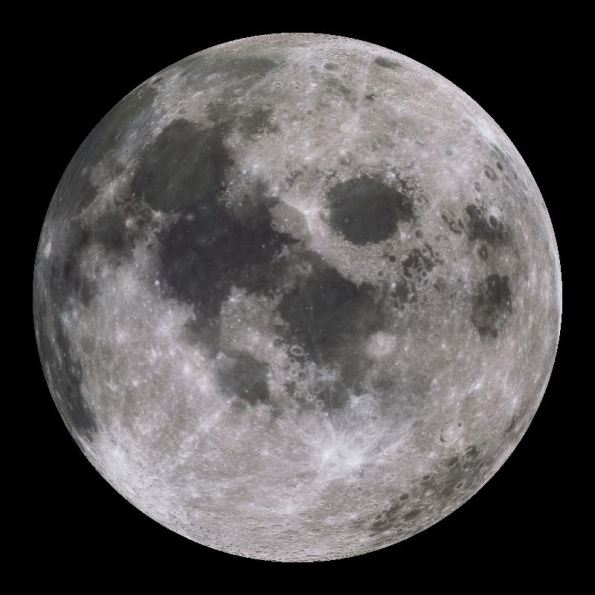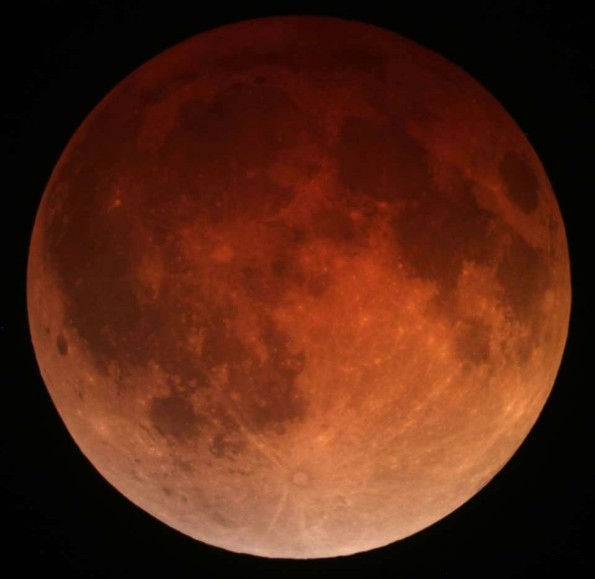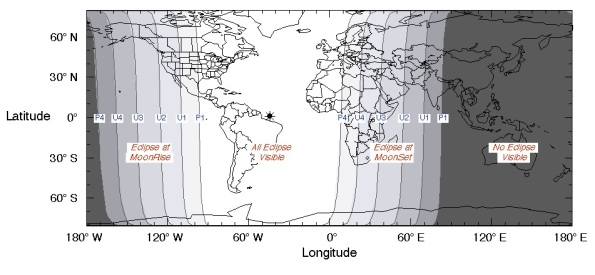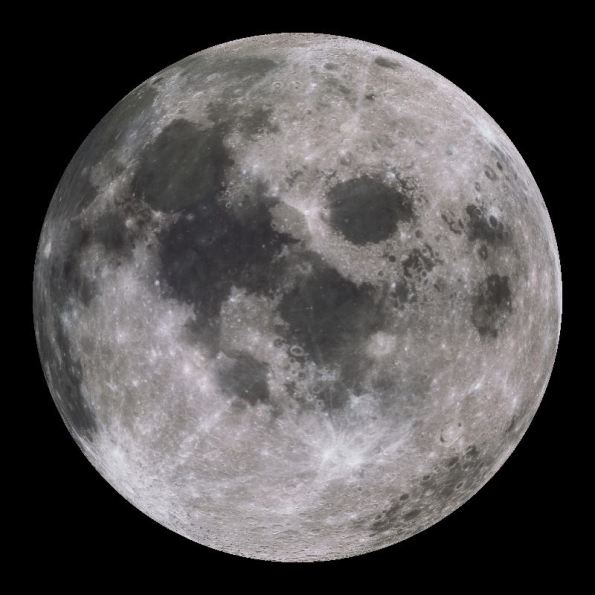Archive
Supermoon Nonsense Redux: November 2016
There seems to be a growing excitement about the “Supermoon” that is due to occur on 14 November 2016, when the Moon will be at its closest to Earth in this orbit, and closer than it has been at any time since 1948.
Sure the full moon will look big and bright this Sunday evening/Monday morning, but no more so than normal. It’ll be 14% larger and 30% brighter but your eyes and brain won’t see any difference from a normal full moon. It’s still worth a look – the moon is always a beautiful thing to see – but if you notice any difference in size or brightness, it’ll be your brain playing tricks on you. Maybe the power of suggestion or the Moon Illusion.
Read on to find out why it’s not any more super than normal…
The Moon orbits the Earth in an elliptical orbit, i.e. it is not perfectly circular, and so in each orbit there is a closest approach, called “perigee” and a furthest approach, called “apogee”.
At this month’s perigee the Moon will be 356,511km away from Earth. Closer than normal, sure but only 66km closer than the “Supermoon” that began all the hype back in 2011, so not that much closer.
Let’s start by comparing it to the Moon’s average distance from the Earth, which is ~385,000km. This perigee will be ~8% closer to the Earth than average. OK, that’s a bit closer, but not significantly so.
What about comparing it to the Moon’s average perigee distance, which is ~364,000km. So this “Supermoon” will be ~2% closer to the Earth than it is most months at perigee. Wow!
So what will this mean to you? Nothing at all. The Moon will be 14% bigger in the sky, but your eye won’t really be able to tell the difference. It will also be 30% percent brighter, but your eye will compensate for this too, so altogether this “Supermoon” will look exactly the same as it always does when it’s full.
As to all of those soothsayers claiming that there will be earthquakes and tidal waves. There very well might be, but they’ll be nothing at all to do with the Moon.
Post Script
Supermoons aren’t all that rare. In fact they occur once every 13.5 months.
Thanks to Steve Bell at the UK Hydrographic Office for providing the calculations below:
The Moon orbits the Earth once every 27.321 days (called the sidereal period), but as the Earth is orbiting the Sun at the same time, the Moon’s phases appear to repeat every 29.530 days (called the synodic period, which is the time we use to derive the month).
The Moon’s orbit is elliptical (a squashed circle) and so you would expect a perigee once every 27.321 days. However the elliptical path around which the Moon orbits the Earth precesses (that is it is not fixed with the perigee occurring at the same part of each orbit; the place where perigee occurs moves, or precesses) with a period of 8.8504 years, so that perigee doesn’t occur once every 27.321 days but rather once every 27.554 days (called the anomalistic period).
To calculate the frequency of perigee full moons (“Supermoons”) you need to use the equation:
1/P(perigee&full) = 1/P(perigee) – 1/P(full)
where P(perigee) is the anomalistic period = 27.554 days, and
where P(full) is the synodic period = 29.530 days
and when you put those figures in you find that a full moon will occur at perigee once every 411.776 days (i.e. P(perigee&full)=411.776), or just less than once per year.
Christmas Full Moon 2015
You might have seen that there will be a Full Moon this Christmas Day, this first time this has happened since 1977.
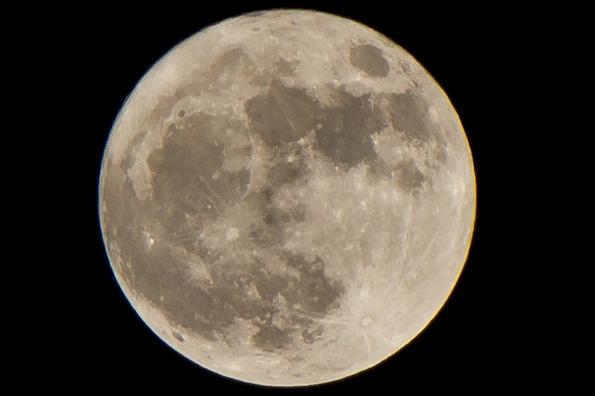
It’s been described on social media as the “perfect” Full Moon. Quite what that means I’m not sure, but there is one factor that makes this month’s Full Moon stand out against the others; it will be this year’s highest Full Moon. But this is true of the Full Moon that happens nearest the winter solstice every year, so there’s nothing particularly “perfect” about this one.
A Full Moon occurs when the Moon is opposite the Sun in our sky, and we see the entire lit hemisphere of the Moon, making it appear full and round.
After it’s full, the Moon will appear to shrink to a gibbous moon (less than full but more the half), a half moon (called the last quarter moon), then a crescent, then a new moon, before growing again through crescent, half, gibbous and back to full. This pattern repeats itself every 29 days, which is approximately one month.
But because it isn’t exactly a month, and because our months vary in length between 28 and 31 days, the Full Moon doesn’t occur on the same numbered day every month, it drifts, seemingly at random.
For example the last decade’s December Full Moons happened on 15, 5, 24, 12, 2 AND 31*, 21, 12, 28, 17, 6 December.
(* In 2009 there were two full moons in December; the second is colloquially known as a blue moon.)
As the 29-day pattern of phases drifts around the 31 days in December it’s not surprising that the occurrence of Christmas Day full moons is around once every thirty years.
The last time this happened was 38 years ago in 1977; the next time it will happen is 19 years in the future, in 2034; an average of every 29 years.
Observing the Moon
If Santa was generous enough to bring you a telescope for Christmas, the Moon is one of the very best places to start. But you don’t want to observe it when it’s full.
This is mainly due to the overall lack of contrast and shadow on the Moon’s surface when it’s lit head-on by the Sun.
The best views of the Moon can be had when you can clearly see the dividing line between light and dark. This line is called the terminator, and when you observe it through a telescope the Moon appears in 3D, with shadows inside craters and beside mountains that really give you a feel for the structure of the Moon’s surface.

In addition the Full Moon is so bright that it drowns out the light of lots of faint astronomical objects, meaning that you would ideally wait till the moon is New, or a think crescent, before venturing out with your telescope to hunt for galaxies and nebulae.
So for stargazers this Christmas Day Full Moon is very far from “perfect”…
Lunar Eclipse 28 September 2015: The Blood Supermoon
Stargazers in the UK are ideally placed to see a rare astronomical event next week, a Total Lunar Eclipse. While not as dramatic as a Total Solar Eclipse, a lunar eclipse is well worth watching for, as the Moon turns deep red at totality.
Unlike a Total Solar Eclipse, where totality lasts only a few minutes, a total eclipse of the Moon last several hours. In the morning hours of Monday 28 September the lunar eclipse begins at 0111BST and ends at 0622BST as the Moon sets. During the very early and late hours of the lunar eclipse you will see part of the full Moon’s disk darken, but it’s only when the Moon enters totality that it will turn red. This dramatic event will happen between 0311 and 0423BST.
This month’s lunar eclipse is made even rarer by the fact that the full Moon on 28 Sep is what’s called a Supermoon. This means that the Moon is closer than normal to Earth, and will appear slightly larger and brighter in the sky. But don’t believe the hype: it will be only a few % closer and so your eye will not be able to detect the difference between this Supermoon and any other Full Moon – except this time it’ll be blood red due to the eclipse! (The Moon may actually look bigger to you if you catch it low on the horizon, but that’s due to the Moon Illusion).
A lunar eclipse occurs when the Moon, in its orbit around the Earth, passes into the Earth’s shadow, as cast by the Sun. You might imagine that this would happen once every lunar orbit, or once a month. That it does not is due to the fact that the Moon’s orbit around the Earth is tilted by around 5 degrees compared with the Earth’s orbit around the Sun. So in most orbits the Moon passes above or below the Earth’s shadow.
However, once in a while (there are at least two lunar eclipses each year) the orbital planes will align so that the Moon passes through the Earth’s shadow, sometimes just grazing it, in which case we get a partial lunar eclipse, and at other times passing right through the shadow, when we get a total lunar eclipse.
The Earth’s shadow has two distinct regions, forming two concentric cones: the inner, darker, part of the shadow is called the umbra, and objects within this part of the shadow receive no direct light from the Sun. The outer, lighter, part of the shadow is called the penumbra, and objects within this part of the shadow can receive direct light from the Sun, but part of the Sun’s disk will be obscured by the Earth, and so less light than normal falls on the object.
There are several distinct phases of a lunar eclipse, as the Moon travels through the penumbra and umbra. For this lunar eclipse the total time during which the Moon is at least partially in the Earth’s shadow is 5 hours 11 minutes, and 72 minutes of this is spent entirely within the umbra, i.e. in total eclipse.
These phases are given the names: P1, the time when the Moon’s disk enter the penumbra; U1, the time when the Moon’s disk enters the umbra; U2, the time when the entirety of the Moon’s disk is within the umbra; U3, the last time when the entirety of the Moon’s disk is within the umbra; U4, the last time when part of the Moon’s disk is within the umbra; and P4, the last time when part of the Moon’s disk is within the penumbra.
The UK is ideally placed to view this total lunar eclipse, although you will have to stay up very late, or get up very early. The Moon is in the sky for the entirety of the eclipse. Observers in western Europe, NW Africa, E North America, and South America will all see the full eclipse from beginning to end.
A detailed information sheet for this eclipse (and others) is available (pdf) on the NASA Eclipse website.
Blue Moon Friday 31 July 2015
This Friday 31 July 2015 there is an event which happens only “once in a blue moon”. Literally. This month there is a Blue Moon.
The occurrence of a Blue Moon doesn’t mean that the Moon will in fact turn blue. Instead a Blue Moon refers to a second Full Moon occurring within a fixed amount of time.
There are two widely accepted definitions of a Blue Moon: either it is an additional Full Moon within a season, or an additional Full Moon within a calendar month.
Moon Phases
Normally there are twelve Full Moons in a year, with one occurring every month. In fact the word “month” is derived from “Moon”. However the phases of the Moon don’t cooperate and divide the year perfectly into twelve with no left overs.
The Moon orbits the Earth every 27.32166 days, known as a sidereal month. As it does so we see different fractions of the lit half of the Moon, creating different phases. However during these 27.32166 days the Earth also orbits the Sun, and so the rate at which the phases change and repeat themselves is slowed down. Looking at the Moon from down here on Earth we see the pattern of phases repeating every 29.53059 days, known as a synodic month.
This is roughly one calendar month, but not exactly. It’s because of this “not exactly” that we don’t get a round number of Full Moons occurring every year, and don’t get exactly one occurring every calendar month.
In fact there are 12.37 Full Moons every year, and for this reason, every so often, we get 13 Full Moons in a year, which means an extra one in a season or in a calendar month.
The Maine Farmers’ Almanac Blue Moon (Type 1)
The original definition of the Blue Moon came from the Maine Farmers’ Almanac which defined a Blue Moon as the third Full Moon within a quarter-year season that has four Full Moons. Confused? You’re not alone. Normally a quarter-year season will have three Full Moons in it, as normally there are 12 Full Moons in a year. But due to that extra Full Moon that we sometimes get, every so often there are 13 Full Moons in a year. This extra Full Moon will occur in one specific season, and in that season the third of the four Full Moons is known as the Blue Moon.
Additional confusion arises due to the fact that the Maine Farmers’ Almanac uses a different definition of a season from the one astronomers use. Astronomers define the start and end points of the four seasons by the position of the Sun in the sky, or put another way the position of the Earth in its orbit. Because the Earth moves at different speeds at different points in its orbit the astronomical seasons are different lengths. Agricultural seasons in the Maine Farmers’ Almanac were all the same length.
This leads to the situation where a Blue Moon (as defined by the Maine Farmers’ Almanac) might occur in an agricultural season but not within an astronomical season. In order to avoid this additional confusion, seasonal Blue Moons are calculated with respect to the astronomical seasons these days.
For decades this definition of a Blue Moon held and was the only one. However now we have an alternative definition, thanks to a mistake in a prominent astronomy magazine.
The Sky and Telescope Blue Moon (Type 2)
In 1946 the astronomy magazine Sky and Telescope published an article by James Hugh Pruett in which he mistakenly interpreted the Maine Farmers’ Almanac. He correctly stated that due to the 12.37 Full Moons per year, we get an extra (thirteenth) Full Moon in seven years out of every 19. He then went on to state that the extra Full Moon that occurs in these seven years must occur in a specific month (correct) and that the second Full Moon in a calendar month is known as the Blue Moon (incorrect, according to the original definition).
Despite the fact that this definition of a Blue Moon was a mistake at the time, it was widely adopted, probably in large part due to its relative simplicity, and is the one that most people use these days.
This Month’s Blue Moon
This Friday’s Blue Moon is an example of a Type 2 Blue Moon, the second Full Moon within a calendar month (July 2015). The first Full Moon this month occurred on 2 July, leaving ample time for the second Full Moon to sneak in at the end of the month, on Friday 31 July 2015.
A Type 2 Blue Moon occurs on average once every 2.7 years. Most type 2 Blue Moons occur within months of 31 days, but they can occur in 30-day months. Because February is only 28 or 29 days long (shorter than the 29.53059 days of the synodic month) February can never have a Blue Moon (jn fact sometimes February has no Full Moons in it at all! The last time this happened was February 1999; the next time it will happen is February 2018).
Within any given century you can expect 37 Blue Moons, around 33 of which will occur in a 31-day month, and around seven of which will occur in a 30-day month.
Future Blue Moons
After this week’s Blue Moon the next one won’t occur until 2018, but then we get two that year! The first occurs on 31 January 2018 (Full Moons on 2 and 31 January 2018) and the second on 31 March 2018 (Full Moons on 2 and 31 March 2018).
After that we have to wait until 31 October 2020.
The next Blue Moon to occur in a 30-day month happens on 30 September 2031.
Partial Lunar Eclipse Tonight, 25 April
There’s a partial lunar eclipse tonight, visible from the UK, as well as from the rest of Europe, Africa, Asia and Australia.
It won’t be hugely dramatic, as it’s only a partial eclipse of the Moon, not a total one. Even total lunar eclipses are far less grand than total solar eclipses, unfolding over several hours rather than minutes, and turning the Moon a deep red rather than making it vanish altogether.
And for partial lunar eclipses, like tonight’s, all we’ll see is a slight darkening of the edge of the Moon, what we call the “limb”.
Nevertheless it’s worth watching out for if you have clear skies. And the best thing of all is that light pollution isn’t really an issue; you’ll see it just fine from a city.
Here are the timings:
Penumbral Eclipse Begins: 18:03:38 UT
Partial Eclipse Begins: 19:54:08 UT
Greatest Eclipse: 20:07:30 UT
Partial Eclipse Ends: 20:21:02 UT
Penumbral Eclipse Ends: 22:11:26 UT
Remember that these times are in universal time (UT) which is the same as GMT, so add one hour on for BST.
Best time to look is between 9pm and 9:20pm BST.
Image from NASA’s eclipse site.
Venus, Jupiter and the Moon, February 26 2012
Tonight, just after sunset, Venus, Jupiter and a thin crescent Moon will line up in the evening sky. If you’ve got clear views towards the west it’s really worth a look.
Thanks to the excellent Starwalk app for the above image.
The Moon Illusion
You’ve probably all seen it before, a huge Full Moon sitting on the horizon. Time and again I have had people ask me why the Moon is so much bigger some times than others, and the answer is: it isn’t, really.
The Moon orbits the Earth in an elliptical orbit, meaning that it is not always the same distance from the Earth. The closest the Moon ever gets to Earth (called perigee) is 364,000km, and the furthest is ever gets (apogee) is around 406,000km (these figures vary a bit).
So the percentage difference in distance between the average perigee and the average apogee is ~10%. That is, if the Full Moon occurs at perigee it can be up to 10% closer (and therefore larger) than if it occurred at apogee.
This is quite a significant difference, and so it is worth pointing out that the Moon does appear to be different sizes at different times throughout the year.
But that’s NOT what causes the Moon to look huge on the horizon. Such a measly 10% difference in size cannot account for the fact that people describe the Moon as “huge” when they see it low on the horizon.
What’s really causing the Moon to look huge on such occasions is the circuitry in your brain. It’s an optical illusion, so well known that it has its own name: the Moon Illusion.
If you measure the angular size of the Full Moon in the sky it varies between 36 arc minutes (0.6 degrees) at perigee, and 30 arc minutes (0.5 degrees) at apogee, but this difference will occur within a number of lunar orbits (months), not over the course of the night as the Moon rises. In fact if you measure the angular size of the Full Moon just after it rises, when it’s near the horizon, and then again hours later once it’s high in the sky, these two numbers are identical: it doesn’t change size at all.
So why does your brain think it has? There’s no clear consensus on this, but the two most reasonable explanations are as follows:
1. When the Moon is low on the horizon there are lots of objects (hills, houses, trees etc) against which you can compare its size. When it’s high in the sky it’s there in isolation. This might create something akin to the Ebbinghaus Illusion, where identically sized objects appear to be different sizes when placed in different surroundings.
2. When seen against nearer foreground objects which we know to be far away from us, our brain thinks something like this: “wow, that Moon is even further than those trees, and they’re really far away. And despite how far away it is, it still looks pretty big. That must mean the Moon is huge!”.
These two factors combine to fool our brains into “seeing” a larger Moon when it’s near the horizon compared with when its overhead, even when our eyes – and our instruments – see it as exactly the same size.
Supermoon Nonsense
There seems to be a growing excitement about the “Supermoon” that is due to occur on 19 March 2011, when the Moon will be at its closest to Earth in this orbit, and closer than it has been at any time since 1992.
The Moon orbits the Earth in an elliptical orbit, i.e. it is not perfectly circular, and so in each orbit there is a closest approach, called “perigee” and a furthest approach, called “apogee”.
At this month’s perigee the Moon will be 356,577km away from Earth, and will indeed be at its closest in almost 20 years [This is WRONG: see Update 2 below!). But how close is it compared with other perigees?
Let’s start by comparing it to the Moon’s average distance from the Earth, which is ~385,000km. This perigee will be ~8% closer to the Earth than average. OK, that’s a bit closer, but not significantly so.
What about comparing it to the Moon’s average perigee distance, which is ~364,000km. So this “Supermoon” will be ~2% closer to the Earth than it is most months at perigee. Wow!
So what will this mean to you? Nothing at all. The Moon will be a few percent bigger in the sky, but your eye won’t really be able to tell the difference. It will also be a few percent brighter, but your eye will compensate for this too, so altogether this “Supermoon” will look exactly the same as it always does when it’s full.
As to all of those soothsayers claiming that there will be earthquakes and tidal waves. There very well might be, but they’ll be nothing at all to do with the Moon.
UPDATE: I predict that lots of people will report having seen a huge Moon on or around 19 March
UPDATE 2: Thanks to “justcurious” for the comment that inspired this calculation, and to Steve Bell at the UK Hydrographic Office for providing the calculations below:
The Moon orbits the Earth once every 27.321 days (called the sidereal period), but as the Earth is orbiting the Sun at the same time, the Moon’s phases appear to repeat every 29.530 days (called the synodic period, which is the time we use to derive the month).
So the first part of the answer is: the Moon is full every 29.530 days.
The Moon’s orbit is elliptical (a squashed circle) and so you would expect a perigee once every 27.321 days. However the elliptical path around which the Moon orbits the Earth precesses (that is it is not fixed with the perigee occuring at the same part of each orbit; the place where perigee occurs moves, or pressesses) with a period of 8.8504 years, so that perigee doesn’t occur once every 27.321 days but rather once every 27.554 days (called the anomalistic period).
To calculate the frequency of perigee full Moons you need to use the equation:
1/P(perigee&full) = 1/P(perigee) – 1/P(full)
where P(perigee) is the anomalistic period = 27.554 days, and
where P(full) is the synodic period = 29.530 days
and when you put those figures in you find that a full Moon will occur at perigee once every 411.776 days (i.e. P(perigee&full)=411.776, or just less than once per year.
All the articles that cite this as the closest full Moon in 18.6 years are wrong; there was a full Moon at perigee 411.784 days ago, on Feb 28th 2010 when the full Moon occurred at 1700UT and perigee occurred just 19 hours before at 2200UT on Feb 27th 2010.
The next so-called Supermoon will occur on May 6th 2012, when the full Moon will occur at 0400UT, with perigee at the same time.
